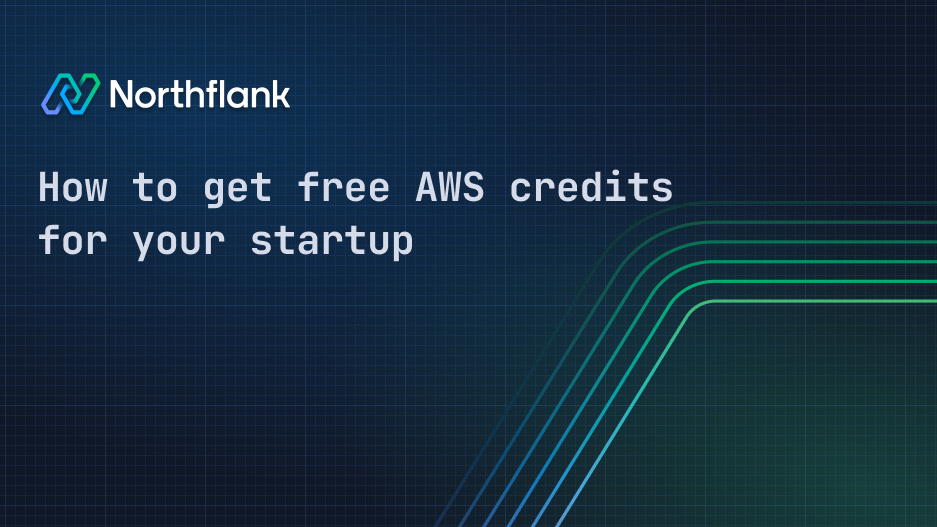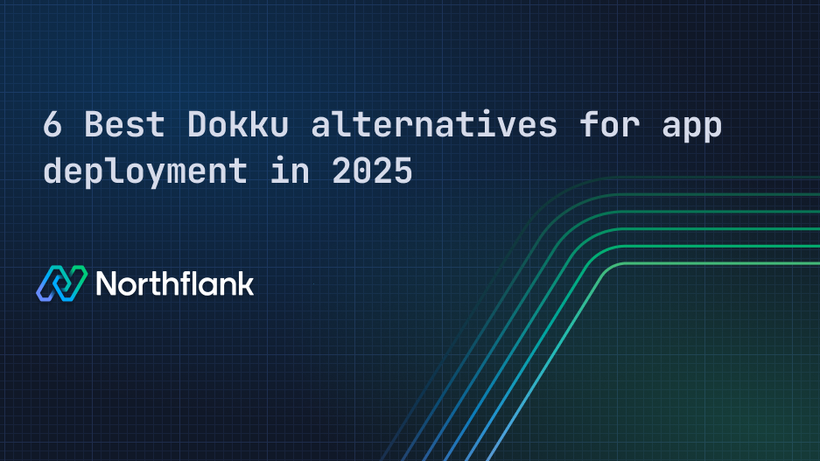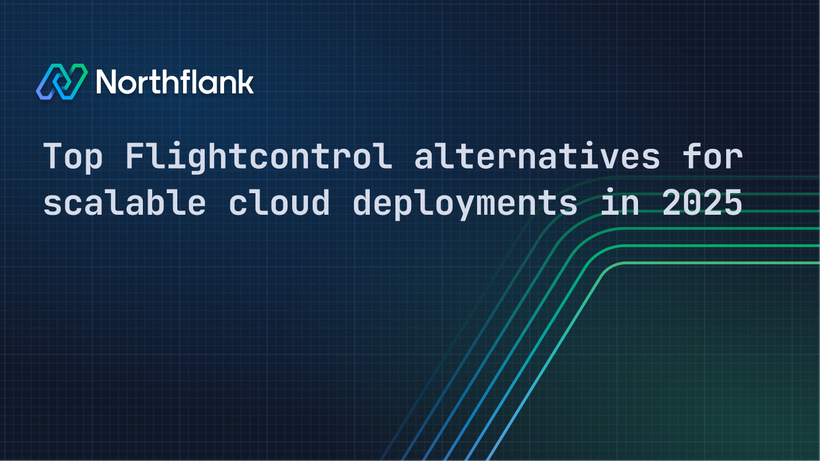

How to get free AWS credits for your startup
If you're a founder building a startup, you've probably heard the phrase "just use AWS credits" tossed around in Slack groups, Twitter threads, or founder forums. And for good reason—Amazon Web Services (AWS) offers generous startup credits that can save you thousands of dollars in cloud costs while you focus on building.
But how do you actually get these AWS credits? Who’s eligible? Where do you apply? And once you have them, how do you make sure you don’t blow through them in the first month?
This guide breaks down the most reliable (and legit) ways to get free AWS credits, how to use them strategically, and how platforms like Northflank help you make the most of every dollar by cutting the complexity out of AWS.
Let’s get into it.
| Source | AWS Credits | Requirements |
|---|---|---|
| AWS activate founders | $1,000 | Bootstrapped, less 10 employees |
| YC startup school | $2,500 | Just apply with your Idea |
| Stripe Atlas | $5,000 | Incorporate via Stripe Atlas |
| FounderPass | Up to $5,000 | Paid membership ($99/year) |
| VC/Accelerator | $10K–$100K+ | Must apply via partner program |
Think of AWS credits as prepaid funds you can use across AWS products and services. They work like a balance on your AWS account and can cover almost any AWS usage, including:
- Hosting websites and web apps
- Running APIs and microservices
- Managing and scaling databases
- Training machine learning models
- Running GPU workloads like ML training or video rendering
- Running dev, test, and staging environments
Depending on your eligibility and how you apply, you can receive anywhere from $1,000 to over $100,000 in AWS credits. Typically, these credits last 12 months from the date of issuance.
While they cover most core AWS services (like EC2, Lambda, S3, etc.), there are a few important exceptions:
- AWS Marketplace purchases
- Premium support plans
- Third-party SaaS products sold via AWS
The answer is simple: they want to lock you in early.
If you build your infrastructure on AWS while you're still pre-revenue or at the MVP stage, there's a good chance you'll stay on AWS when you grow and start paying real money. Free credits are a calculated long-term bet for Amazon.
That’s why they created the AWS Activate program, which is the main route startups use to access these credits.
AWS Activate is AWS's flagship credit program for startups. It offers different tiers based on how you’re building—whether you’re bootstrapped or VC-backed.
This tier is designed for early-stage startups that are not yet affiliated with any venture firm or accelerator.
- Credits: $1,000 in AWS credits, $350 in developer support credits, plus access to training
- Eligibility:
- Fewer than 10 employees
- Less than $1M in annual revenue or funding
- Not affiliated with a VC, accelerator, or AWS Activate partner
- Have not previously received AWS Activate credits
This is the route for solo founders, indie hackers, or any pre-seed team bootstrapping their way forward.
If you’re working with a recognized AWS Activate partner, you likely qualify for a much higher credit package.
- Credits: $5,000 to $100,000 in AWS credits (depending on the partner and stage)
- Eligibility:
- Must be affiliated with an AWS Activate partner (e.g., VC, accelerator, incubator, SaaS platform)
- Must apply through that partner (you can’t apply directly to Portfolio tier without a referral)
If you're part of any well-known startup program, ask them if they’re an AWS Activate partner—you’re probably already eligible.
You don’t need to be in Y Combinator or backed by a top-tier VC to unlock meaningful AWS credits. There are several legitimate third-party programs that either include Activate referrals or offer bundled perks.
- Includes $2,500 in AWS credits
- Fast and straightforward application process
2. Stripe Atlas
- Incorporating through Stripe Atlas includes $5,000 in AWS credits via AWS Activate
- No separate application—credits are included automatically when you use Atlas to form your company
3. FounderPass
- Offers up to $5,000 in AWS credits
- Access is gated behind a paid membership that includes discounts and perks on tools like Notion, Airtable, HubSpot, etc.
If you're part of a startup program like:
- Y Combinator
- Techstars
- Antler
- On Deck
- Plug and Play
- or dozens of others
Then you're almost certainly eligible for $10,000–$100,000+ in AWS credits via their partner status. Reach out to your program director or internal startup support lead—they usually have a direct AWS Activate link for you to apply through.
Yes, in some cases.
If you apply through different Activate partners (like YC startup school, Stripe Atlas, and FounderPass), you may be able to stack credits. For example:
| Source | Credits |
|---|---|
| YC startup school | $2,500 |
| Stripe Atlas | $5,000 |
| FounderPass | $5,000 |
As long as they’re from different partner channels and you haven’t already used Activate Portfolio, AWS will often approve them. Just don’t try to game the same program tier twice—they’ll flag that.
Getting credits is one thing. Making them last is another.
Here are a few battle-tested strategies to stretch your AWS credits:
Favor services like:
- AWS Lambda (functions-as-a-service)
- DynamoDB (NoSQL database)
- S3 (storage)
These scale to zero, meaning you only pay for actual usage. No idle costs.
For GPU-heavy workloads like machine learning, rendering, or batch jobs, Spot Instances are 70–90% cheaper than on-demand EC2. These are ideal when you need power without the full price tag.
Before you launch anything, configure AWS Budgets and create alerts for usage thresholds. This will help you avoid surprise overages—or burning through $1K in one weekend.
Many startups leave dev or staging environments running 24/7 when they don’t need to be. Schedule them to shut off automatically after hours or on weekends.
Northflank supports this out of the box.
Getting AWS credits is great, but actually using them without wasting time or money? That’s where things get tricky.
If you’ve ever tried setting up infrastructure on AWS, you know it’s not exactly plug-and-play. You end up dealing with:
- IAM roles and permission errors
- VPCs, subnets, and security groups
- Dozens of EC2 instance types and unclear pricing
- A billing dashboard that’s impossible to read
- Services that keep running after you forget about them
These complexities quickly consume valuable time, often turning a simple deployment into hours of unexpected troubleshooting, and meanwhile, your credits are quietly disappearing in the background.
For most startups, there’s no dedicated DevOps team. So managing AWS becomes a side project for your developers, when what you really need is to focus on shipping the product.
Northflank lets you deploy apps, jobs, databases, and even GPU workloads to your own AWS account with your credits, and makes it easier to stay portable if you later decide to run across clouds. All without ever touching the AWS console.
You get:
- Easy to deploy with no DevOps setup
- Built-in CI/CD, secrets, logs, and preview environments
- Automatic shutdown of idle resources
- Real-time visibility into what’s running and what it costs
- Support for any AWS region
- Full ownership and flexibility (it’s still your AWS account)
And because everything runs on your account, your Activate credits apply like normal—no weird vendor lock-in or middlemen.
Usually 12 months. Some partner-issued credits may vary.
Most core services, yes. But not AWS Marketplace products, Premium Support, or external SaaS tools.
No. AWS Activate credits are typically one-time per company.
No. Credits are locked to the account to which they were issued.
You don’t need major funding or a big team to access AWS credits. You just need to know how to find them — and make the most of them.
Northflank takes the complexity out of AWS so you can focus on building, not battling cloud infrastructure. Deploy faster, stay in control of your costs, and turn your credits into real progress.
Get started with Northflank and launch on AWS in minutes.

